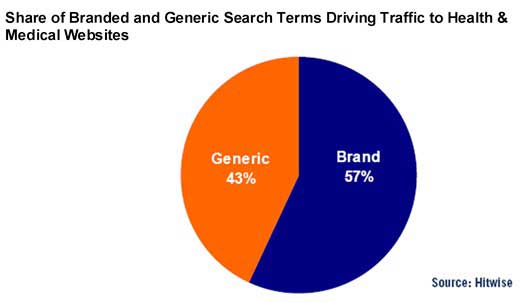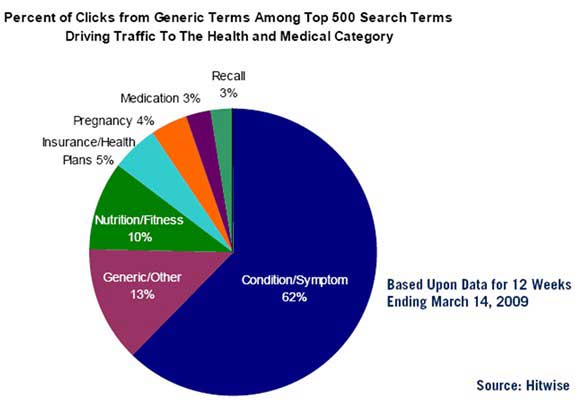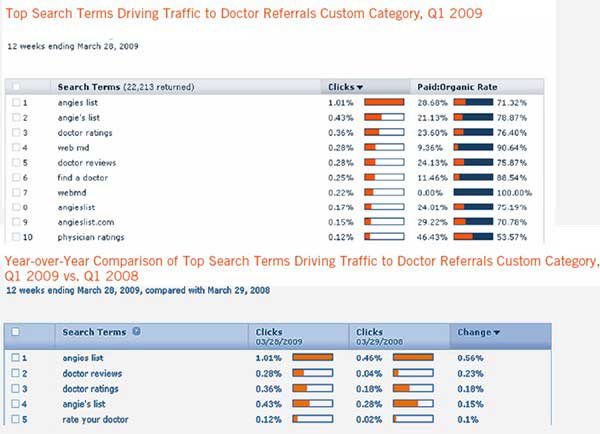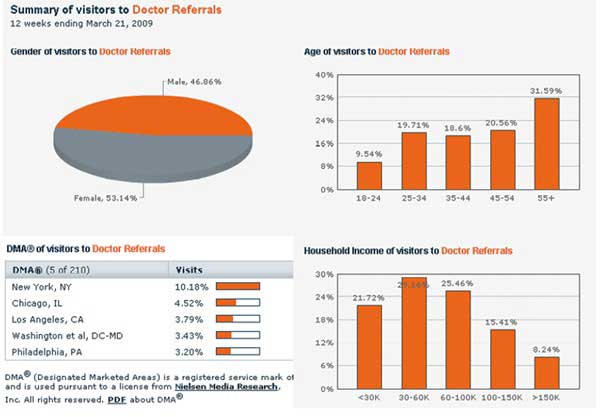Although overall traffic declined slightly (-3%) to US websites in the health and medical category year-over-year from March 2008 to March 2009, some sectors experienced significant jumps in volume, most notably health insurance sites, which increased 11% YOY, according to a report by Hitwise entitled Diagnosing Online Health, published in May 2009. Health insurance sites represented nearly 8% of total sites in the health and medical category at the time of the survey.
The author of the report, Heather Dougherty, Hitwise's director of research, suggests that the rise in the unemployment rate and the worsening economy largely account for the increase in such visits.
Because the loss of a job in the US means the loss of employer-provided medical insurance, Dougherty suggests that one reason for the uptick in visits to health insurance sites was that greater numbers of the newly unemployed went there to research COBRA coverage and to compare the costs of individual health insurance policies. Another possible reason she suggests is that, as the economy worsened, increasingly greater numbers of workers began to fear layoff and visited such sites to check their benefits package so they could take advantage of their coverage while they still had it.
Starting in October 2008, when the economic climate worsened and layoffs increased, health insurance sites experienced a rise in visits:
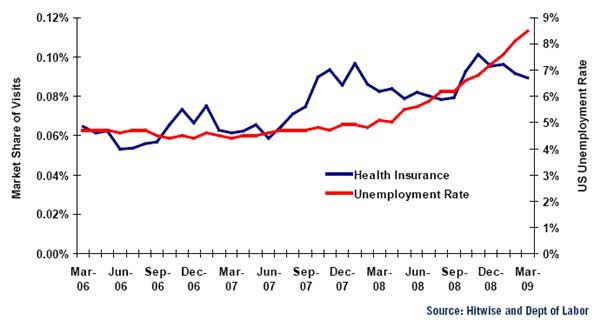
Other findings:
- Typically, the first and the last months of the year are among the highest in visits to health insurance websites as people check what coverage remains and how much is available for the upcoming year. In line with the economic crisis, unemployment, and election year, the health insurance category reached a three-year peak in November 2008 as Americans cautiously tracked their health care options online.
- Visits to OTC sites increased 21% YOY March 2008 to March 2009, likely due to individuals looking to self-treat instead of visiting a doctor and paying for prescription medicine, writes Dougherty.
- Other subcategories showing growth were primary doctors and specialists, with an increase of 11%, followed by hospitals, which rose 4%.
Search Is Leading Driver of Traffic
Search is the leading driver of traffic to health and medical sites and accounted for 46% of the upstream traffic in March 2009. Overall, Google referred the majority of the traffic driven by search and represented 34% of the visits during March 2009. The three subcategories that received the highest share of visits referred by search engines were alternative, research, and information. Pharmacies and health insurance sites were among the least-visited in March in the health and medical category, receiving 34% and 26% of visits, respectively:
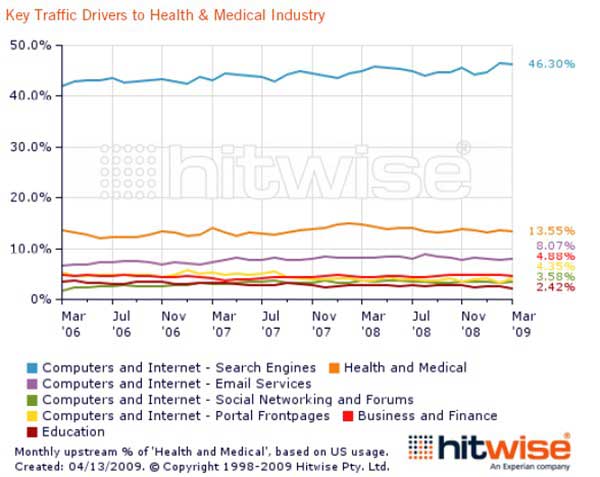
Traffic from health and medical websites ranked second as a referral source, with 14% of visits coming from other health and medical websites within the category. The graph below shows how these referrals break down by subcategory:
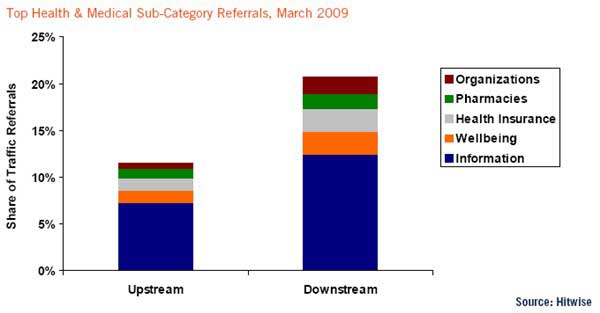
Wikipedia
One of the most common destinations for many searches on the web is Wikipedia. The dynamic nature of the content on this site helps the entries on the website to optimize quickly and appear in the top organic search results for specific conditions:
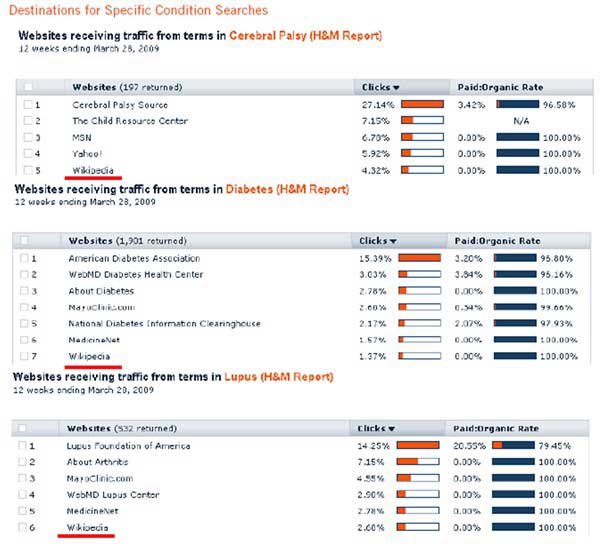
Wikipedia can also serve as a source of traffic to the health and medical industry because the website may be one of the first stops for an information seeker, before driving additional visits to more specific or specialized content. In March 2009, just over 2% of Wikipedia’s downstream traffic visited a website in the health and medical category.
